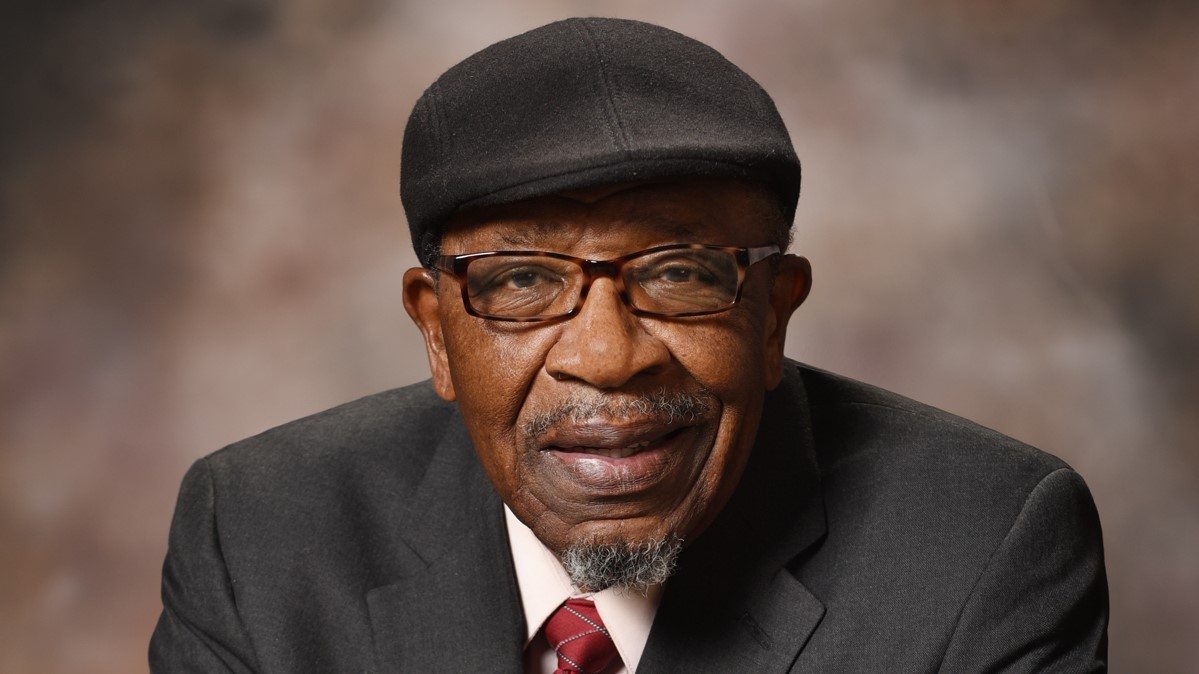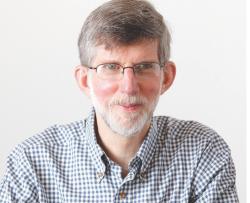Last month I wrote about John M. Perkins, who is black, and wealthy philanthropist Howard Ahmanson, who is white. Forty years ago, together in a hotel near the Mumbai, India, airport, they wanted their driver, a Dalit (“untouchable”), to have a room. The hotel manager threatened to call the police, but Perkins and Ahmanson were insistent.
The standoff ended only when the driver ran out, saying, “No, no, no, I sleep in truck.” But the encounter was useful in bonding Perkins and Ahmanson, both of whom were outraged at the treatment this man endured. They and Ahmanson’s assistant, Rob Martin, finally made it from Mumbai to the first destination of Perkins’ preaching tour, Union Biblical Seminary in Pune, India, then the largest seminary in Asia. The students, many of whom were dark-skinned, clustered around John. They had heard he was a civil rights leader. To them he was Martin Luther King and other heroes from 1960s America rolled into one.
The students threw questions at Perkins. He spoke of the relation of the gospel to justice. As is common in India, the students bobbled their heads side to side to show agreement, but Perkins did not know what that meant. He halted and asked Martin, “What am I saying they don’t like?” Martin replied, “I don’t know, but they must be really irritated, so you should stop.” A student picked up on the exchange and explained that the bobble is positive.
The students eagerly listened to Perkins’ emphasis on economic development through community organizations. He spoke of the importance of ownership, since people who pay for something or build it are much more likely to take care of it. He noted that Hinduism teaches followers to accept poverty but that Christians emphasize ways to come alongside companies and show how they can create good jobs and build better housing.
Meanwhile, the seminary’s head, Saphir Athyal, paid more attention to Ahmanson, the heir to $300 million; the seminary hoped for a piece of it. Ahmanson, noticing how slowly people in Mumbai and Pune worked and walked, wondered at dinner how four decades of Congress Party socialism had contributed to lassitude. Athyal did not engage with Ahmanson’s free market emphasis. Instead, he talked about the need for more contraception.
Not very effective fundraising, but Ahmanson was more interested in what Perkins was saying anyway. I wrote last month about how both of them, from vastly different backgrounds, missed out on a father’s love. This was 1984, not 1968, when Ahmanson’s dad died, but as Ahmanson heard Perkins speak, he heard something like his father’s message from the 1960s: free enterprise works, and small banks help people with modest incomes get mortgages so they have better homes. In India, the free enterprise message would take five more years to sink in, but in 1989 voters threw out Congress Party socialism. The result? India in recent years has been the world’s fastest-growing major economy.
While in India, Perkins emphasized both spiritual and economic change. On a Sunday, he preached outside in a nearby village where a sewage ditch with black water ran next to the white plastic chairs that became popular in India during the 1970s and are now ubiquitous. Poverty and poor health were also everywhere: as Perkins spoke, a child dipped his toothbrush into the black ditch water and brushed his teeth.
Perkins’ usual text on such occasions was 1 John 3:16–18, a passage that emphasizes what Jesus did: “By this we know love, that he laid down his life for us, and we ought to lay down our lives for the brothers. But if anyone has the world’s goods and sees his brother in need, yet closes his heart against him, how does God’s love abide in him? Little children, let us not love in word or talk but in deed and in truth.” Perkins teared up as the local pastor called for an offering, and a tide of poor children rolled forward, each putting a small coin into the basket.
Perkins, Ahmanson, and Martin then flew 500 miles to Bangalore, a growing south India city, the beneficiary of private manufacturing companies moving and expanding there. (In fact, the year after the Perkins-Ahmanson visit, Texas Instruments created an Indian base in Bangalore. By the time I visited in 2003, it was on its way to becoming the Silicon Valley of India.) Perkins preached at Richmond Town Methodist Church, opened in 1877 and one of India’s largest Christian churches in the 1980s. Several thousand Indians packed the sanctuary, which had an old sound system that made it hard for most of the listeners to understand Perkins’ low voice, but his presence and personality nevertheless pulled them in.
Those who could catch his words heard a plea, based on the American experience, that they not take the easy route of waiting for government anti-poverty programs. Perkins in Mississippi had emphasized housing co-ops where contractors would put up basic structures and owners would put in “sweat equity” to finish the jobs. He also talked about farmers’ co-ops where a group would save money by getting together to buy wholesale seeds or fertilizer rather than paying a higher price at a local store.
The Perkins-Ahmanson bonding continued on the flight to their next destination, Australia. They were pleased that with different backgrounds they had an underlying connection both in childhood loneliness and in current understanding of how real change occurs, spiritually and economically. In Australia, Perkins spoke to Aboriginal men about the dignity of work. He proposed, as Booker T. Washington had a century before, that these Indigenous people, facing prejudice, build up themselves economically by learning to be carpenters, cobblers, and well diggers.
The standard Indigenous response to Perkins was: We are hunters and gatherers. We don’t work. The government has taken our land and should pay us, in perpetuity. Perkins night after night spoke of economic development and entrepreneurship—black people, black businesses—but many in his audience insisted: We’re not interested. We’re Marxists. Five years before the fall of the Berlin Wall and the eclipse of Marxism, they wholeheartedly embraced that label.
The last stop on the Perkins preaching trip was Palm Island, a pristine place located next to the Great Barrier Reef. The government created a penal settlement there, and over time it became an “Aboriginal reserve.” By 1984 residents were receiving government checks that many quickly cashed. The Australian government had created a regulation that allowed alcohol sales only for several hours on one day, so the custom was to drink as much as possible during that time. Perkins gave his standard talk about economic development for the poor, only to be told by islanders that they were content to get their government checks each week: We hunt and gather. That is our culture.
Perkins tried specificity: With tourists potentially coming to the island, how about opening restaurants serving Aboriginal food? The Aborigines replied, “Our food is terrible,” and they demonstrated that by serving a meal. It was terrible. Even the potatoes tasted bad. Perkins inquired about harvesting coconuts from the thousands of palm trees, or opening up hotels, but the response was always, You don’t understand our culture. We are gatherers.
In a different way, Perkins and Ahmanson both began to see themselves not as giver and recipient but as gatherers, too. Perkins gathered together poor people and help them to overcome injustice. Ahmanson, given money he hadn’t earned but now had to distribute, viewed charity not as a rescue mission but as a wedding of fortune and talent. The preaching tour concluded, Perkins and Ahmanson flew 7,500 miles back to Los Angeles, then separated with pledges to stay in contact.
And they did. Ahmanson was active as a funder and member of the John and Vera Mae Perkins Foundation board. Five years later, in October 1989, at a meeting in Oak Park, Illinois, they launched the Christian Community Development Association (CCDA) with 35 other founding members. By 1996, CCDA involved more than 4,000 people and 500 churches, ministries, and organizations in more than a hundred towns and cities.
Ahmanson made many trips to Mississippi for Perkins Foundation board meetings and helped the Perkins family in several ways, but avoided becoming a “sugar daddy” to Perkins and his children. Their friendship continues, but with reciprocity. Ahmanson said, “Because we are such good friends, I don’t doubt that if I were ever in need in some way that [he] could help me, John would gladly do so. In fact, John has built such a community around himself that several people from it—and most of them are white—have become friends of mine as well.”
Perkins has created not only a community but also a shelf of books. Let Justice Roll Down (1976) tells his story of building ministries and recovering from a police beating that almost killed him. Recent ones I’ve learned from include One Blood: Parting Words to the Church on Race and Dream with Me: Race, Love, and the Struggle We Must Win. That last book emphasizes racial healing but also brings out the Bible’s emphasis on how Jesus became incarnate, suffered as a human being, and took on the sins of the world.
Neither Perkins nor Ahmanson has written the story of their travels in India and Australia, but the title of one book by Perkins, He Calls Me Friend, shows the thinking that allowed the two to become friends. In that book, Perkins references chapter 15 of the Gospel of John, where Jesus calls his disciples “friends.” Perkins wrote, “We affirm individuals by how we greet and respond to them; by how we look them in the eyes and acknowledge their presence.”
Perkins goes on to cite an African proverb: “When I saw you from afar, I thought you were a monster. When you got closer, I thought you were just an animal. When you got even closer, I saw that you were a human, but when we were face to face I realized that you were my brother.”

